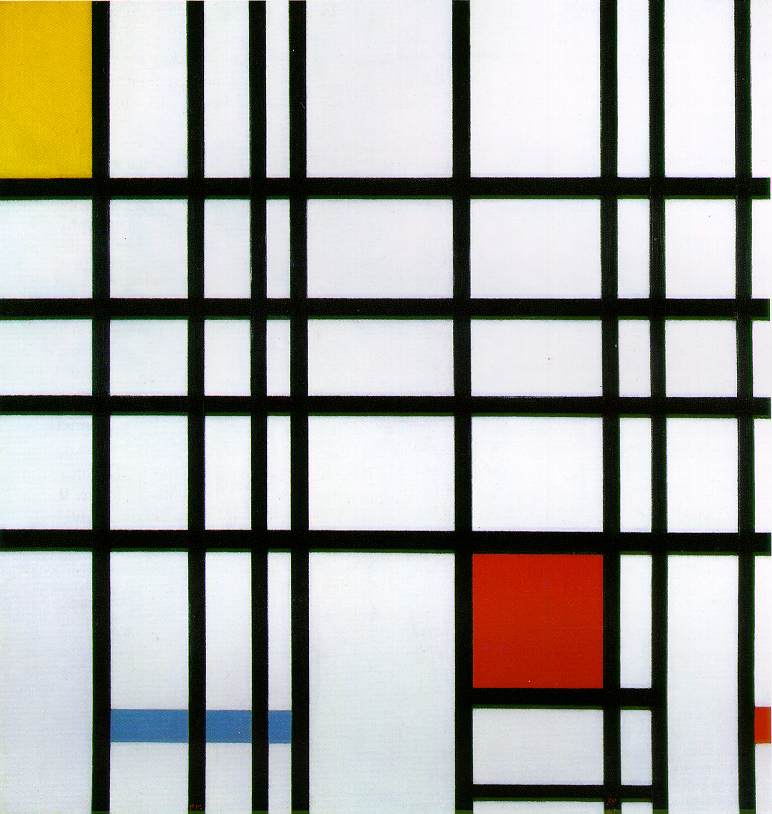|
Lesson Plans Course
Links Quick
Links
|
||||||||
|
Modernism This
page is a general clearinghouse on modernism. Terms | Times | Links | Pictures | Quotes from Critics For a detailed yet accessible (and relatively brief -- 20 pages) overview of American Modernism, see Towards a Definition of American Modernism by Daniel Joseph Singal in American Quarterly (Accessed via JSTOR) Terms to Know
modernism: A general term applied retrospectively to the
wide range of experimental and avant-garde
trends in the literature (and other arts) of the early 20th
century, including Symbolism
, Futurism
, Expressionism
, Imagism
, Vorticism
, Ultraismo
, Dada
, and Surrealism
, along with the innovations of unaffiliated writers. Modernist
literature is characterized chiefly by a rejection of 19th-century traditions
and of their consensus between author and reader: the conventions of realism
, for instance, were abandoned by Franz Kafka and other
novelists, and by expressionist drama, while several poets rejected
traditional metres
in favour of free
verse . Modernist writers tended to see themselves as an avant-garde
disengaged from bourgeois values, and disturbed their readers by
adopting complex and difficult new forms and styles. In fiction, the accepted
continuity of chronological development was upset by Joseph Conrad , Marcel
Proust , and William Faulkner , while James Joyce and Virginia Woolf
attempted new ways of tracing the flow of characters' thoughts in their stream-of-consciousness
styles. In poetry, Ezra Pound and T. S. Eliot replaced the logical
exposition of thoughts with collages
of fragmentary images and complex allusions
. Luigi Pirandello and Bertolt Brecht opened up the theatre to
new forms of abstraction in place of realist and naturalist
representation. How about a powerpoint review of the literary themes we've covered so far -- with a special emphasis on moderism?. Okay. Click below to download and click on the link below for a web version of the slideshow. Engaging and informative overview of the Great Depression -- a central event of late modernism. A fine short overview to modernism is at the Poets.org site. Interesting essay from the New York Times on the cultural relevance of WWI Online exhibit titled Teaching the American 20s is filled with archival documents on the period, complete with a special section on Modernism (and a cool picture of Pound). You may want to check this site for an art-centric history of modernism. For an outline of American Modernism, see the PAL site by Paul Reuben Is there a physiological connection to moderism? Consider the following excerpt from Radio Lab (great program -- follow this link for intellectual ear candy) on why we like certain sounds -- which ends with an . . . appreciation . . . of Stravinsky's Rites of Spring. Modern American Poetry Photo
essay on World War I Pictures, Pictures,
Pictures
The paintings below are precursors to the Modernist art movement, showing that many of the visual effects and themes were part of the cultural zeitgiest even before the 1900s
Images from Wikipedia Quotes from Critics
© David Bordelon 2009
|






